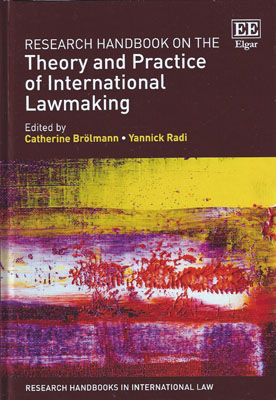
The global landscape has changed profoundly over the past decades. As a result, the making of international law and the way we think about it has become more and more diversified.
This Research Handbook offers a comprehensive guide to the theory and practice of international lawmaking today. It takes stock at both the conceptual and the empirical levels of the instruments, processes, and actors involved in the making of international law.
The Editors have taken an approach which carefully combines theory and practice in order to provide both an overview and a critical reflection of international lawmaking. Comprehensive and well-structured, the book contains essays by leading scholars on key aspects of international lawmaking and on lawmaking in the main issue areas.
Attention is paid to classic processes as well as new developments and shades of normativity. This timely and authoritative Handbook will be a valuable resource for academics, students, legal practitioners, diplomats, government and international organization officials as well as civil society representatives.